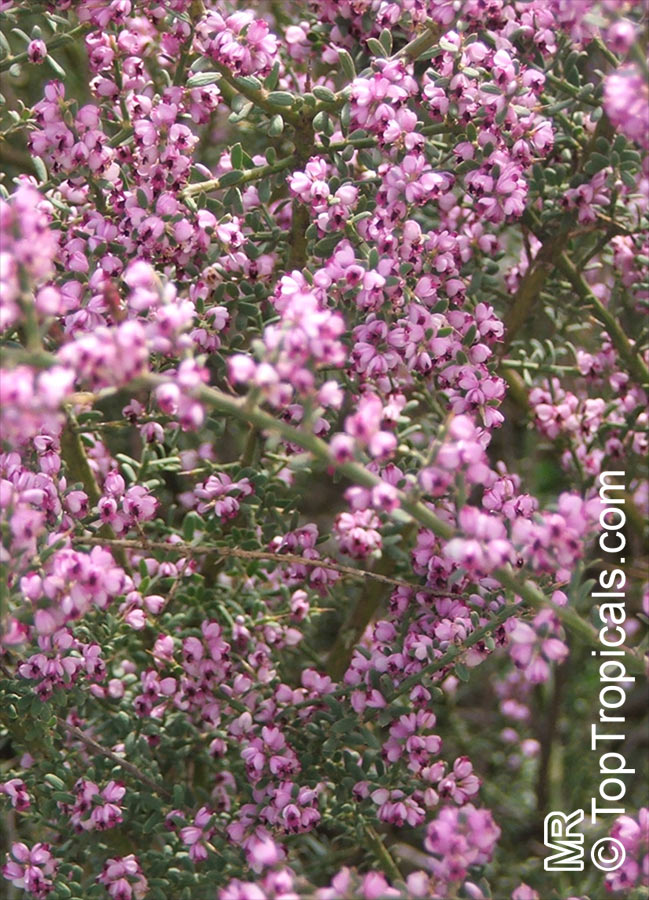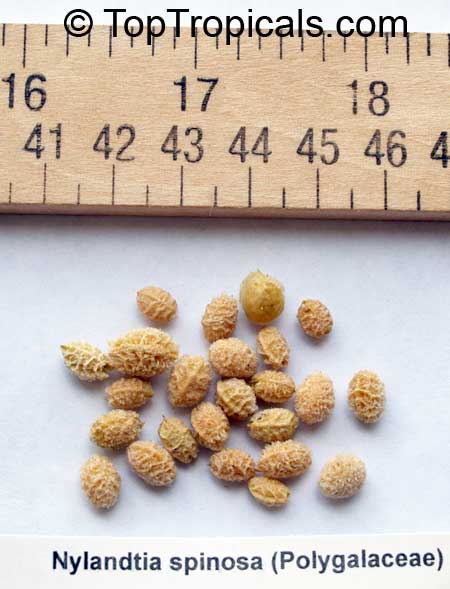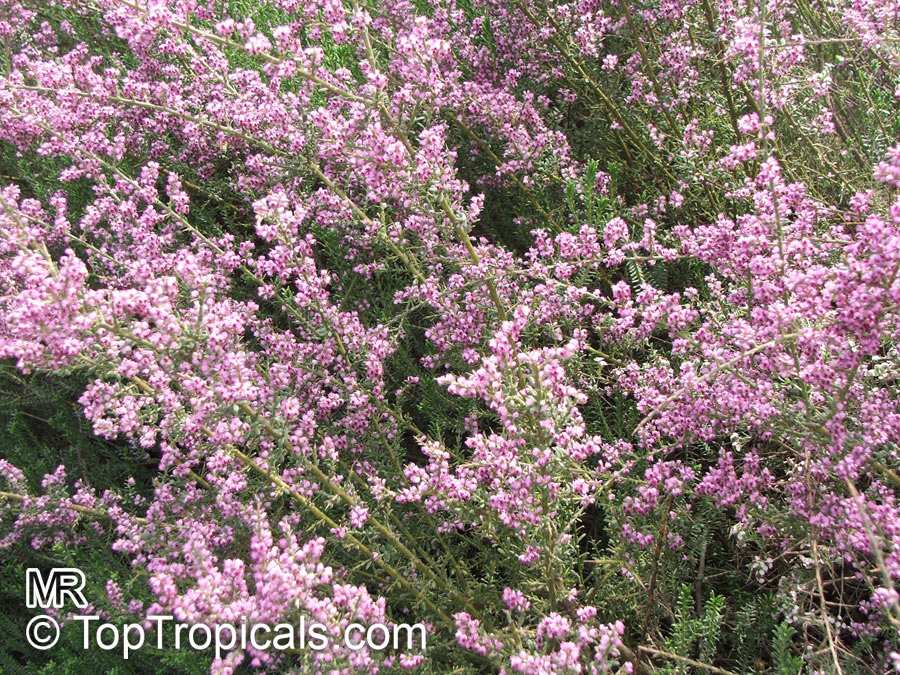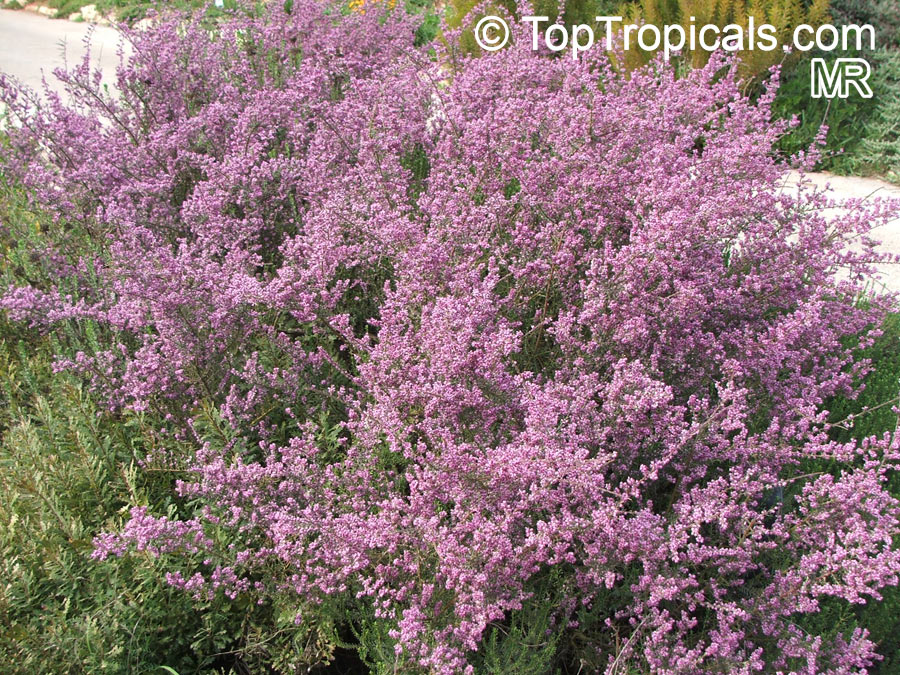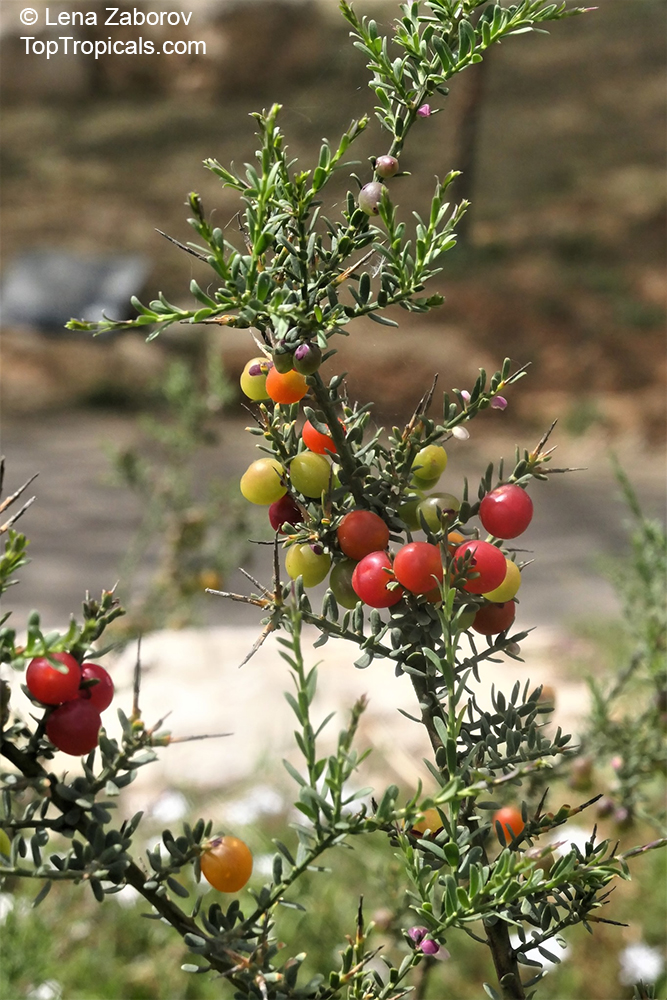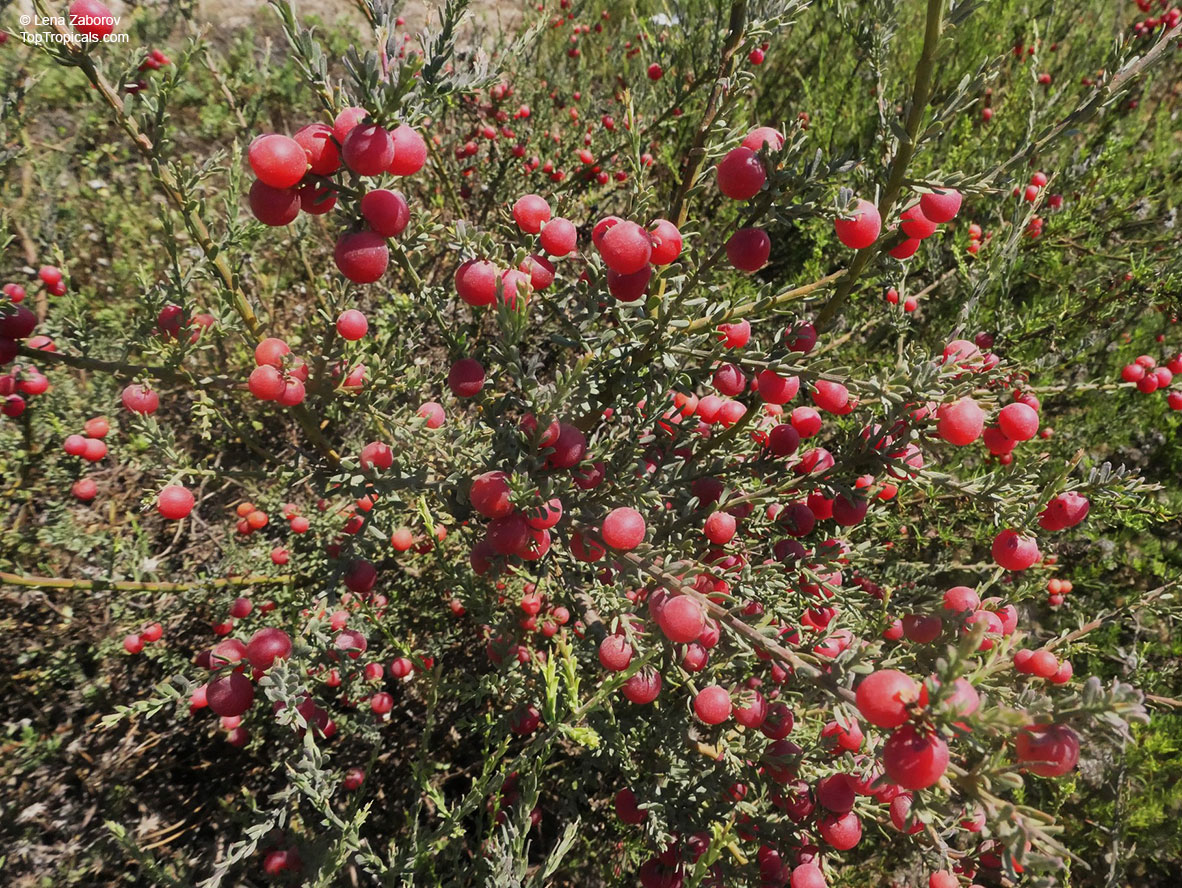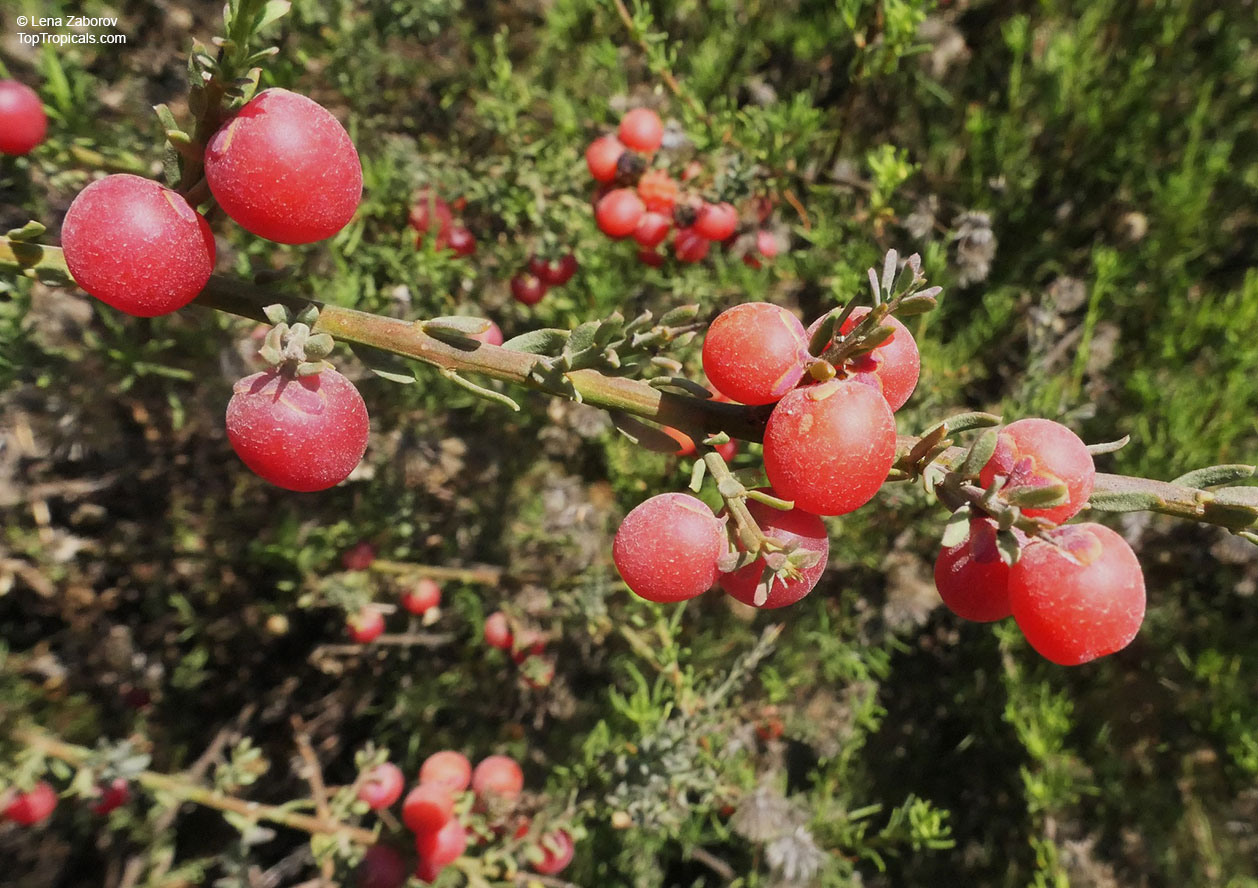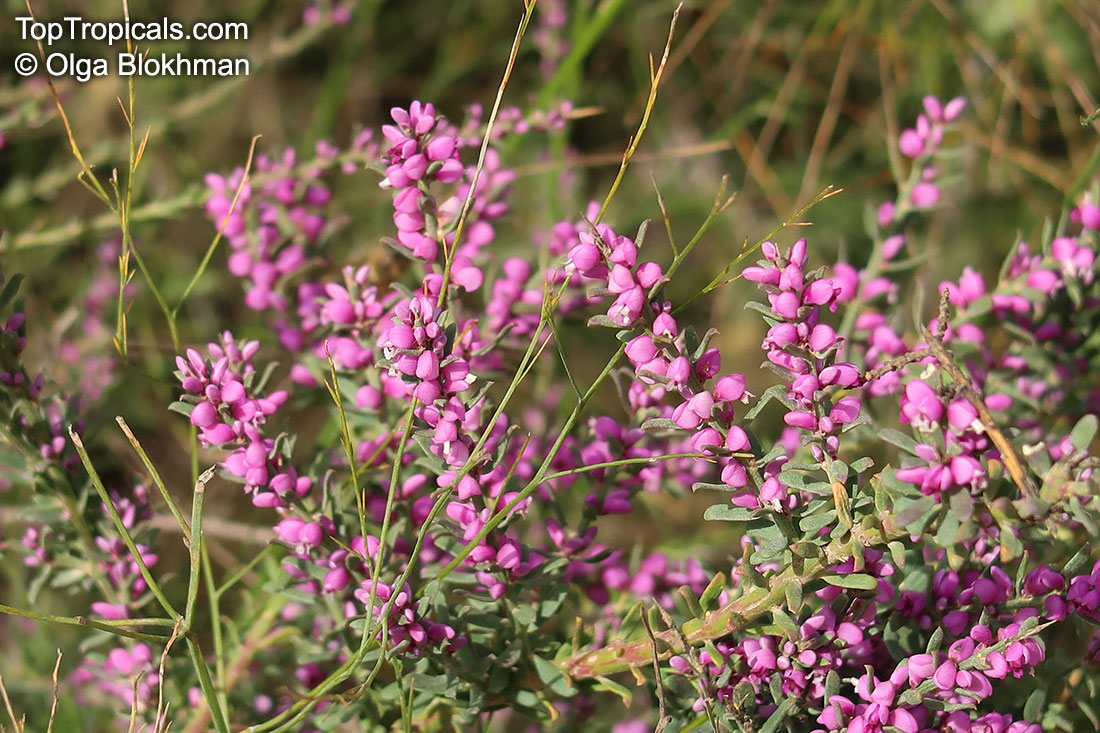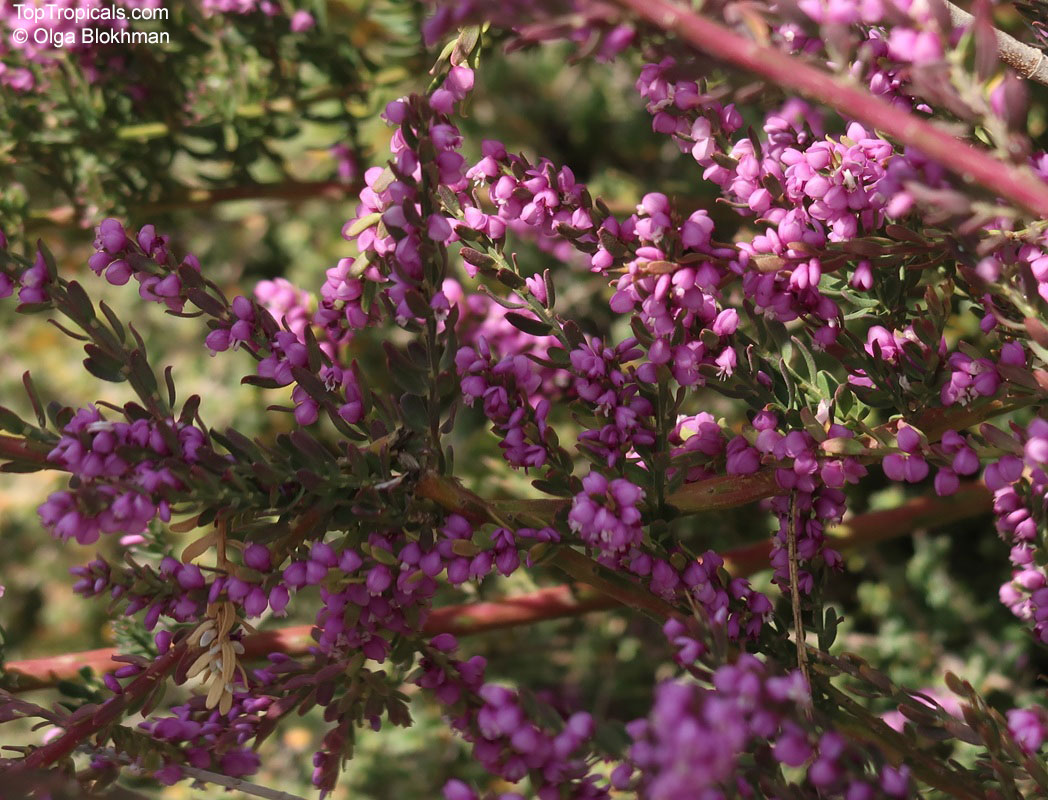Muraltia spinosa (Tortoise Berry)
Top Tropicals Plant Encyclopedia
Botanical names: Muraltia spinosa, Nylandtia spinosa, Mundia spinosa
Common names: Tortoise Berry, Skilpadbessie
Family: Polygalaceae
Origin: South Africa











Muraltia spinosa, also known as Tortoise Berry, is an attractive and unusual shrub native to South Africa. Growing to an average height of 5-10 ft tall, it can also be used as a groundcover and low-growing shrub reaching heights of 2ft. Well suited to full sun, Muraltia spinosa can tolerate moderate water and dry conditions. It is adorned with pink flowers, which attract butterflies and hummingbirds, and produces a red edible fruit.
The Tortoise Berry fruit is rich in Vitamin C and has been used in traditional medicine for treating colds, flu and bronchitis, as well as providing relief for abdominal pain and tuberculosis. Tea/infusions of stems and leaves also act as a general tonic and bitter digestive. This ethnomedical plant has properties that can help those with sleeplessness when the leaves are chewed in small amounts. The fruits are quite thirst-quenching and can be eaten straight from the bush.
Tortoise Berry is very easy to care for and requires minimal maintenance. It is a tough plant and will usually survive with little attention. Water as necessary and ensure the soil is well-drained. It is also fairly resistant to most pests. It can be grown in USDA Zones 9-11. Mature plants are cold hardy and can withstand temperatures as low as 30 degrees Fahrenheit for a short time. It is salt-tolerant and can be grown near the sea. Propagation is best done from seed and can take up to a year, however it is very rewarding and will usually create a beautiful display once planted in rockeries and slopes and any well-drained, sunny garden position. If located in colder regions, it is advised to grow the shrub in a pot and bring indoors during cold snaps.
